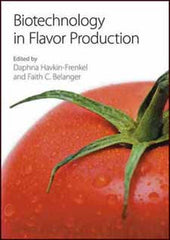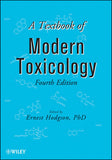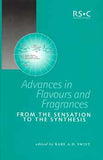Biotechnology in Flavor Production edited by Daphna Havkin-Frenkel
edited by Daphna Havkin-Frenkel
Biotechnology in Flavor Production covers the art of flavor production through biotechnology, examining the principles and current methods of producing flavors from plants and other organisms.
Coverage includes plant tissue culture and genetic engineering of plants for flavor improvement and genetic engineering of bacteria and fungi for flavor improvement of fermented beverages and dairy products. The book is directed at food scientists and technologists in the food and flavour industries.
Contents
1. The development of yeast strains as tools to adjust the flavor of fermented beverages to market specifications
2. Biotechnology of flavor production in dairy products
- Biochemistry of dairy fermentation
- Biotechnology and flavor
- Flavor production from bacteria
- Comparative genomics of flavor production
- Expression and metabolite analysis
- Non-culturable lactococci
3. Biotechnological production of vanillin
- Biosynthesis of vanillin
- Production of vanillin by biotechnology
- Use of physical and mild chemistry
- Synthetic vanillin
- Vanillin from vanilla beans
- Regulations
4. Plant cell culture as a source of valuable chemicals
- Establishment of callus culture
- Initiation and maintenance of cell culture
5. Tomato aroma: biochemistry and biotechnology
- The major aroma impact volatiles in tomato and their biosynthetic pathways
- Biosynthesis of tomato volatiles
- Carotenoid pigmentation affets the flavor and volatile composition of tomato fruit
- Genetic engineering of tomato aroma
6. Flavour development in rice
- Old flavors of rice
- Rice texture
- Fragrant rice
- The chemistry of rice fragrance
- The genetics of rice fragrance
- BAD enzymes and 2AP synthesis
7. Breeding and biotechnology for flavor development in apple
- Quality
- Apple volatiles
- Ester compounds and ester biosynthesis
- Measurement techniques
- Varietal and develoopmental differences
- Effect of processing
- Effect of 1-methylcyclopropene tereatment
- Hypoxia
- Gene isolation
- Genetic studies, linkage maps and marker-assisted selection
- ESTs
- Transgenic approaches
- Ethylene production and softening (ACS-ACO)
- Consumer perceptions and sensory testing
8. Aroma as a factor in the breeding process of fresh herbs – the case of basil
- The importanc eof selecting for aroma in breeding of aromatic plants
- The importance of genetic factors regarding the essential oil composition in aromatic plants
- Sweet basil and the Ocimum genus
- Uses of sweet basil
- The chemistry of the aroma factors of plants: the essential oil
- Essential oil profiles of common commercial basil varieties
- Comparison of chemical analysis methods
- Variation of the volatile compound composition within the plant
- Variation of aroma compounds within cultivars and the potential for selection
- Biosynthetic pathways of basil aroma components
- Inheritance of aroma compounds in basil
- Interspecific hybridization among Ocimum species
- Applications of biotechnology-based approaches to modification of basil aroma
9. Increasing the methional content in potato through biotechnology
- Flavor compound methional in foods
- Formation of methional
- Synthesis of Met in plants
- Biotechnology to enhance Mt and methional
10. Regulatory aspects of flavor development - traditional versus bioengineered
- Bioengineered food products
- Conventional flavors
- The use of microbes as vectors of food ingredients and flavors
- Bioengineered flavors
- Safety standards of food products, ingredients, and flavors
- Determination of 'reasonable certainty of no harm' safty standard
- The 1992 policy - substantial equivalence of bioengineered food ingredients
- Plant-derived bioengineered foods - a special case
- Labeling of bioengineered food products
- Allergenicity of bioengineered foods
Index

















